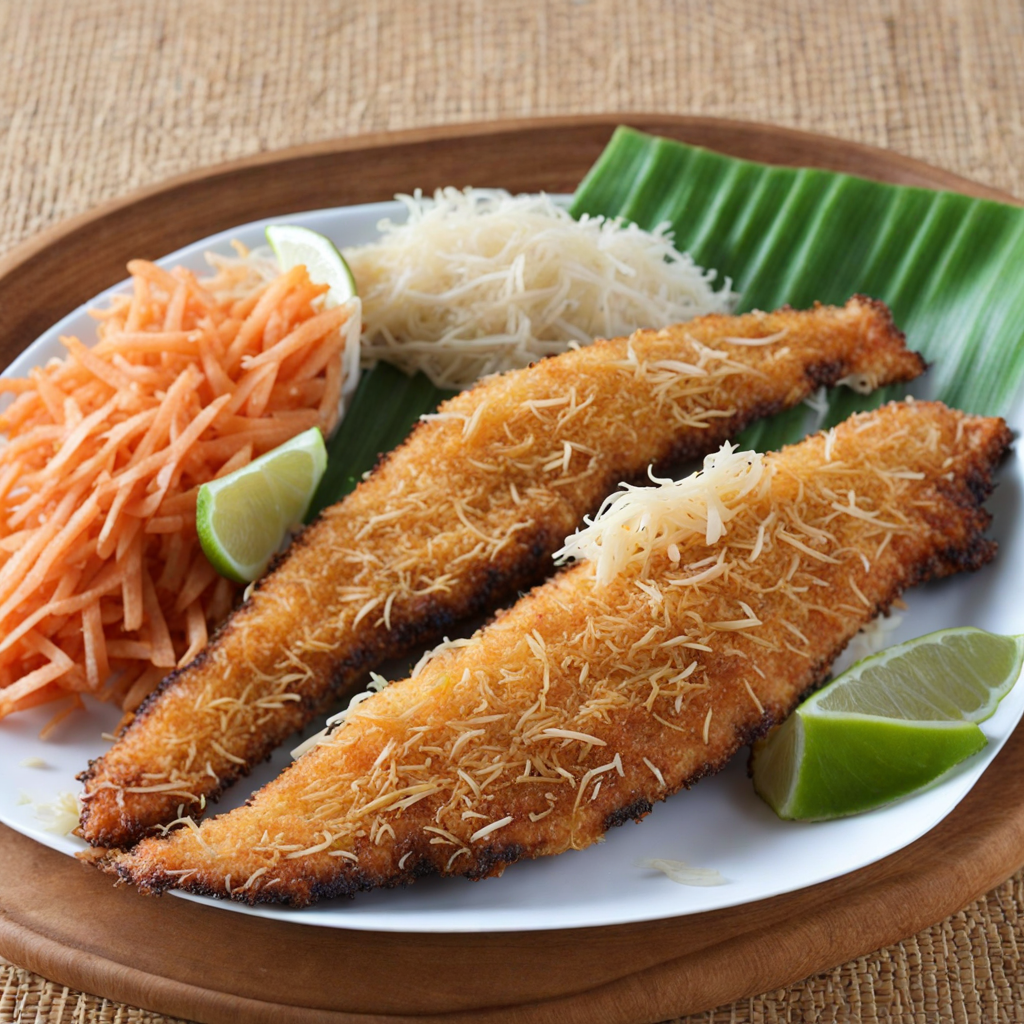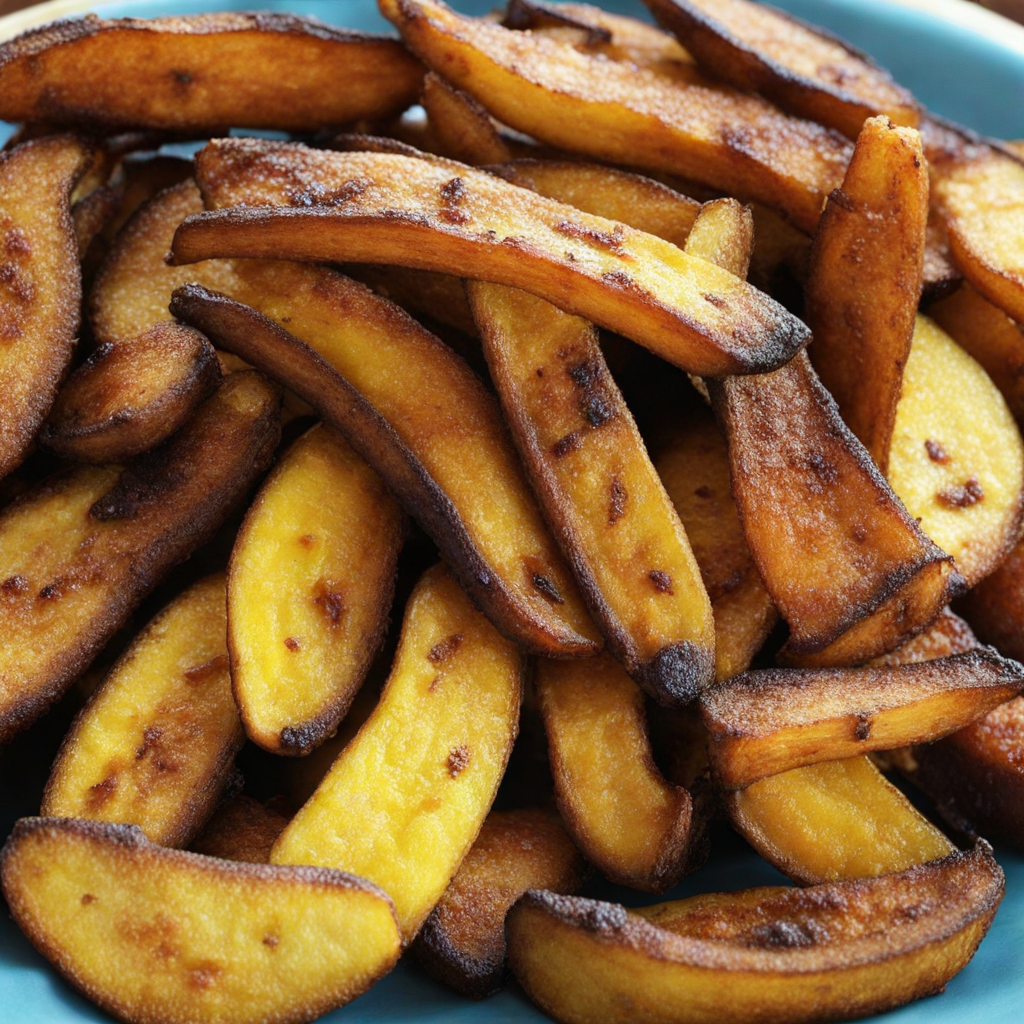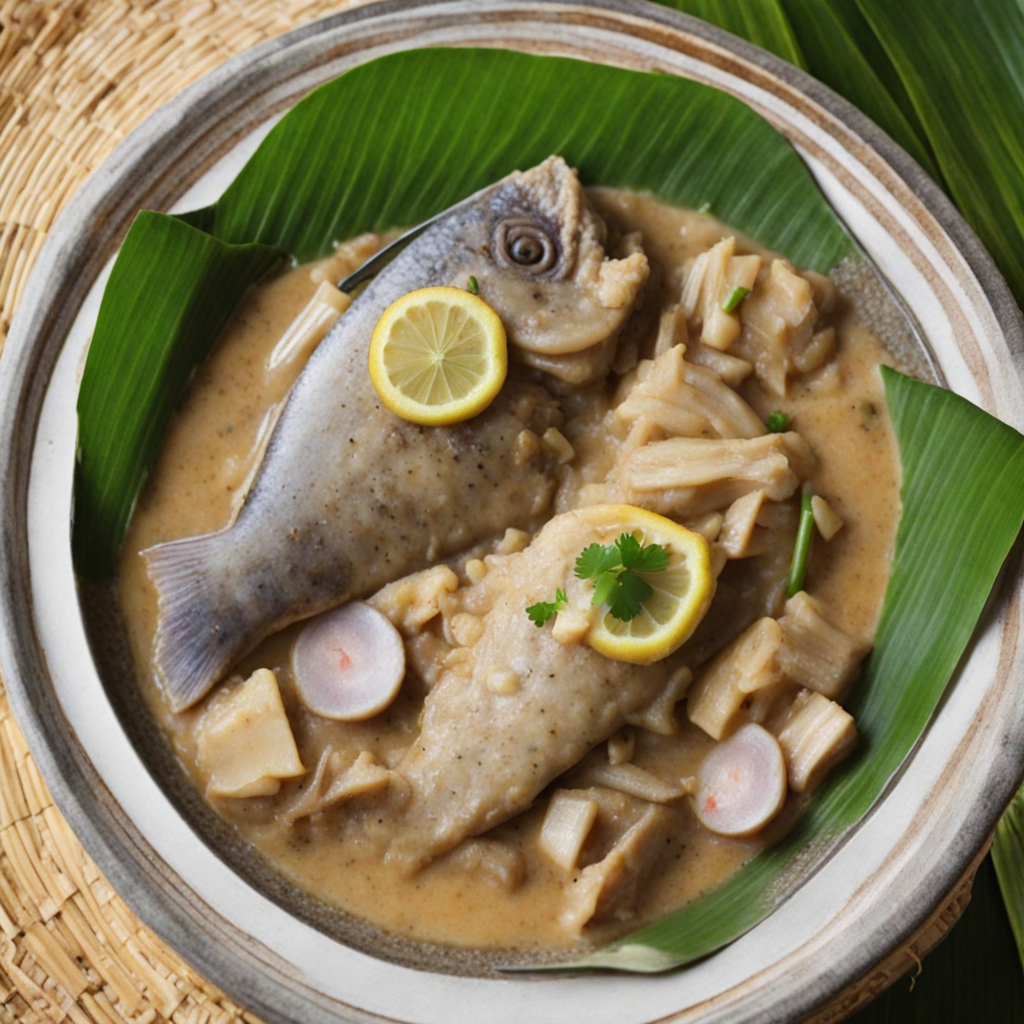Coconut Encrusted Fish
Coconut Encrusted Fish is a delightful dish that captures the essence of the Solomon Islands' lush landscapes and abundant marine life. The fish, typically a fresh catch from the surrounding waters, is coated in a flavorful mixture of shredded coconut and spices. This unique crust not only adds a delightful crunch but also infuses the tender fish with a subtle sweetness that perfectly balances its natural savory flavors. The combination of textures—from the flaky, moist fish to the crispy coconut exterior—creates an unforgettable eating experience that transports you straight to the sun-drenched beaches of the islands. The dish is often served with a side of vibrant tropical salsa, featuring ingredients like mango, pineapple, and lime, which enhance the coconut flavor while adding a refreshing zing. This bright accompaniment complements the richness of the fried coconut crust, making each bite a harmonious blend of tastes and sensations. The use of fresh, locally-sourced ingredients is paramount in Solomon Islands cuisine, and Coconut Encrusted Fish showcases the region's commitment to sustainability and flavor. Enjoying Coconut Encrusted Fish is not just about the taste; it’s also about the experience of savoring a dish deeply rooted in the culture and traditions of the Solomon Islands. It embodies the islanders' connection to the ocean and the land, celebrating the bounty that nature provides. Whether enjoyed as a casual meal or a festive feast, this dish invites you to explore the vibrant culinary landscape of the Solomon Islands, offering a perfect introduction to its unique flavors and culinary heritage.
How It Became This Dish
The History of Coconut Encrusted Fish in the Solomon Islands The Solomon Islands, an archipelago situated in the South Pacific Ocean, is a treasure trove of biodiversity and cultural richness. Among its culinary gems, the dish known as Coconut Encrusted Fish stands out, not only for its delightful flavors but also for its deep-rooted connections to the islands' history, culture, and the abundant marine resources that surround them. The evolution of this dish reflects the islands' traditions, the adaptation of indigenous ingredients, and the influence of globalization, making it a fascinating topic for exploration. #### Origins of Coconut Encrusted Fish The origins of Coconut Encrusted Fish can be traced back to the indigenous peoples of the Solomon Islands, who have relied on the bounty of the sea for sustenance for thousands of years. Fishing has always been a vital part of island life, with species such as tuna, snapper, and grouper forming the backbone of local diets. The coastal communities developed sophisticated fishing techniques, often using traditional canoes and nets made from natural fibers. Coconuts, on the other hand, have been integral to the Pacific Islander lifestyle for millennia. The coconut palm, known as "the tree of life," provides not just food but also materials for shelter, tools, and crafts. The combination of fish and coconut reflects a symbiotic relationship with the environment, utilizing local resources efficiently and sustainably. The earliest versions of what we now know as Coconut Encrusted Fish likely involved simple preparations of freshly caught fish, seasoned with local herbs and wrapped in coconut leaves before being cooked over an open fire. The use of grated coconut flesh would have come later, adding texture and a sweet, nutty flavor to the dish. This method of preparation honors the traditional gastronomy of the Solomon Islands, where meals are often communal and centered around the family. #### Cultural Significance Coconut Encrusted Fish is more than just a meal; it is a representation of the Solomon Islands' cultural identity. The dish is often prepared during significant celebrations, such as weddings, festivals, and community gatherings, symbolizing hospitality and abundance. The act of sharing food is a cornerstone of social interaction in Solomon Islands culture, and Coconut Encrusted Fish serves as a centerpiece for these communal feasts. The dish also embodies the deep spiritual connection between the people and their land. Fishing is not merely a means of sustenance; it is imbued with rituals and beliefs that honor the ocean's spirits. The preparation of Coconut Encrusted Fish often includes prayers and blessings, a practice that reinforces the relationship between the community and their environment. This interplay of food, spirituality, and social cohesion highlights the significance of the dish in the cultural fabric of the Solomon Islands. #### Development Over Time As the Solomon Islands were exposed to external influences, particularly during the colonial period and the subsequent waves of globalization, the preparation and presentation of Coconut Encrusted Fish evolved. European colonization introduced new cooking techniques and ingredients, which, when combined with indigenous practices, led to a fusion of flavors and styles. In the 19th and early 20th centuries, as Christian missionaries arrived, they brought with them new culinary ideas that began to intermingle with local traditions. Local chefs started experimenting with ingredients like breadcrumbs, which could be used alongside grated coconut, offering a different texture and a crispier result. This adaptation showcased the islanders' culinary ingenuity and their willingness to incorporate new influences while maintaining the essence of their traditional dishes. The rise of tourism in the late 20th century further transformed Coconut Encrusted Fish. As visitors flocked to the Solomon Islands seeking adventure and cultural experiences, local chefs began to refine their recipes to appeal to international palates. Restaurants started serving Coconut Encrusted Fish not only as a local delicacy but also as a representation of the islands' culinary heritage. The dish became a symbol of the Solomon Islands’ unique identity on the global stage, drawing attention to its rich marine biodiversity and the importance of sustainable fishing practices. #### Modern Interpretations Today, Coconut Encrusted Fish can be found in both local eateries and upscale restaurants, often served with a variety of accompaniments that highlight the fresh produce of the region. Modern interpretations may include tropical salsa, coconut rice, or a drizzle of citrus-infused sauce, enhancing the dish's appeal to a broader audience. Chefs are increasingly emphasizing the use of sustainably sourced fish, championing conservation efforts while educating diners about the importance of protecting marine ecosystems. The popularity of Coconut Encrusted Fish has also spread beyond the borders of the Solomon Islands. Culinary enthusiasts around the world have embraced this dish, often adapting it to local tastes and ingredient availability. Whether served as a gourmet entrée in a fine-dining establishment or as a home-cooked meal, the essence of the dish remains rooted in its origins—celebrating the flavors of the sea and the richness of coconut. #### Conclusion Coconut Encrusted Fish serves as a delightful representation of the Solomon Islands' culinary heritage, encapsulating the history, culture, and environment of this stunning archipelago. From its indigenous origins to its modern interpretations, the dish reflects the resilience and adaptability of the islanders, showcasing their ability to preserve traditions while embracing change. As this dish continues to evolve, it remains a testament to the importance of community, sustainability, and the deep connection between people and their land. Through Coconut Encrusted Fish, one can taste not just the flavors of the ocean and the earth, but also the rich narrative of the Solomon Islands—a story of survival, celebration, and a profound respect for nature.
You may like
Discover local flavors from Solomon Islands







